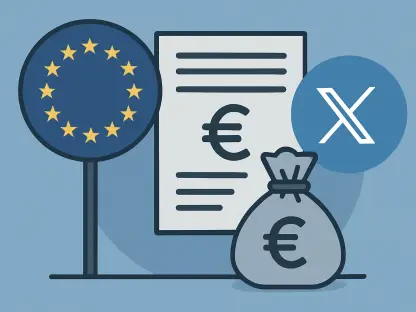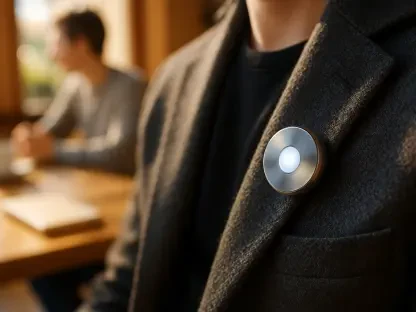In a courtroom drama that has captured the attention of the tech and medical device industries, a federal jury in California recently ordered Apple to pay Masimo, a medical technology company, a staggering $634 million for patent infringement related to the Apple Watch’s blood oxygen monitoring features. This landmark decision underscores a critical tension at the heart of modern innovation: the balance between protecting intellectual property (IP) and fostering technological advancement. As tech giants and niche players clash over proprietary rights, questions arise about whether stringent IP laws are safeguarding inventors or stifling progress. The dispute between these two companies offers a window into how legal battles over patents can shape product development, market competition, and consumer access to cutting-edge technology. This case, with its hefty financial penalty and ongoing appeals, serves as a flashpoint for broader debates about the role of IP in an era of rapid digital and medical innovation.
Legal Battle Unfolds with High Stakes
The legal skirmish between Apple and Masimo centers on allegations that Apple infringed on Masimo’s pulse oximetry technology patents, which are integral to blood oxygen monitoring systems. Masimo has accused Apple of not only violating these patents but also poaching key personnel, including a former chief medical officer, to access proprietary knowledge. The jury’s ruling, which focused on features like the Apple Watch’s workout mode and heart rate notifications, was hailed by Masimo as a major victory for protecting innovation. The $634 million award signals a strong stance on defending IP rights, particularly for smaller firms challenging industry giants. Yet, the complexity of the case lies in the expired status of the infringed patent, which Apple argues relates to outdated technology. This raises critical questions about the relevance of enforcing old patents in a fast-evolving field, where yesterday’s breakthroughs quickly become today’s relics, potentially hindering new developments.
Apple, in response to the verdict, has vehemently disputed the findings, labeling them as contrary to factual evidence and announcing plans to appeal. The tech giant contends that Masimo, which primarily operates in the business-to-business medical device sector rather than consumer markets, has pursued an aggressive litigation strategy by filing multiple lawsuits across various courts. Apple also points out that many of Masimo’s asserted patents have been deemed invalid, casting doubt on the legitimacy of their broader claims. Beyond the courtroom, Apple’s perspective highlights a systemic issue: the potential misuse of IP litigation as a competitive tool rather than a means of genuine protection. This ongoing dispute, with its massive financial implications, illustrates how legal battles can drain resources and divert focus from innovation, leaving industry observers to ponder whether such conflicts ultimately benefit or burden technological progress.
Regulatory Rulings and Market Impacts
Adding another layer to this intricate saga, the U.S. International Trade Commission (ITC) previously ruled in favor of Masimo, imposing a ban on importing Apple Watches equipped with blood oxygen monitoring features. This decision forced Apple to disable the functionality on newer models, significantly altering the product’s appeal for health-conscious consumers. However, Apple devised a workaround by shifting the blood oxygen readings to the paired iPhone, a move that Masimo has since challenged by suing U.S. Customs and Border Protection for permitting the import of these modified devices. Meanwhile, Apple continues to seek a reversal of the ITC ban through an appeals court. This regulatory back-and-forth demonstrates how IP disputes can directly affect product availability and consumer choice, often leaving end-users caught in the crossfire of corporate and legal maneuvering over technical rights.
The market ramifications of these rulings extend beyond immediate product features, influencing how companies strategize around IP and innovation. Apple’s countersuit against Masimo, which resulted in a nominal $250 payment for design patent violations, reflects the tit-for-tat nature of this conflict. Such legal entanglements highlight a broader industry concern: the risk that IP protection, while essential for safeguarding original ideas, can be weaponized to block competitors or delay market entry of new technologies. As regulatory bodies like the ITC wield significant power over product distribution, the outcomes of these disputes could set precedents for how future IP conflicts are resolved. This case underscores the delicate balance between enforcing patents to reward inventors and ensuring that such enforcement does not impede the pace of technological advancement for the public good.
Navigating the Future of IP and Innovation
Reflecting on the protracted conflict between Apple and Masimo, the $634 million verdict stood as a historic win for the smaller medical tech firm, affirming the importance of IP in protecting specialized innovations. Yet, Apple’s determination to appeal and its track record of navigating complex legal challenges suggest that the battle is far from over. The temporary disabling of key Apple Watch features due to the ITC ban revealed how regulatory interventions could reshape consumer experiences overnight. These events emphasize the intricate dance between legal rights and market dynamics, where each ruling reverberates through boardrooms and living rooms alike.
Moving forward, the resolution of this dispute could pave the way for clearer guidelines on how IP laws apply to expired patents and rapidly evolving technologies. Industry stakeholders might consider advocating for reforms that prioritize innovation-friendly policies, ensuring that patent protections do not become barriers to progress. Collaborative frameworks between tech giants and niche players could also emerge as a solution, reducing litigation through shared licensing agreements. Ultimately, the lessons from this case may inspire a reevaluation of how IP is wielded, aiming to foster an environment where creativity and competition thrive hand in hand.









